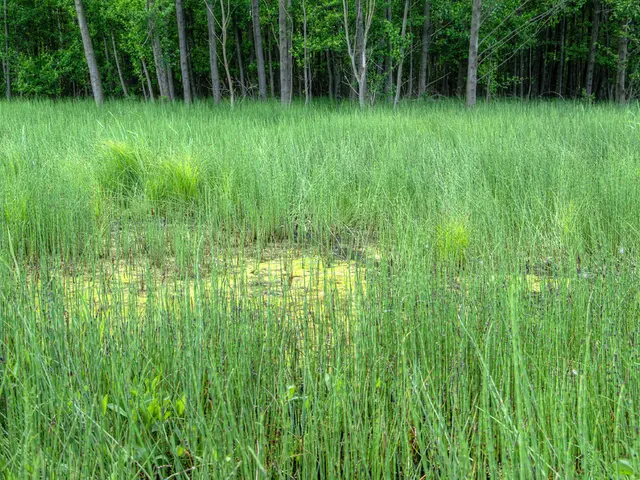Important Guidelines for Tree Trimming and Ladder Security for Instructors and Overseeing Personnel
In the realm of tree pruning and trimming, the use of ladders is essential for reaching high branches and maintaining safety. Here are some key safe practices to follow when using tripod, closed-top, extension, and straight ladders:
- Choose the right ladder for the job: Tripod ladders are ideal for uneven terrain due to their stability, while straight and extension ladders work well on flat ground or for reaching higher branches.
- Inspect ladders before use: Always check your ladder for any signs of damage and ensure that locking mechanisms are fully engaged before climbing.
- Position ladders on firm, level ground: Whenever possible, place your ladder on a solid, level surface. Tripod ladders are designed to maintain stability on uneven soil.
- Secure ladders properly: For extension ladders, angle them about 75 degrees with the base one-quarter of the ladder’s height away from the tree. If you have a helper, they can hold the base to provide extra stability.
- Maintain three points of contact: Maintain three points of contact (two hands and one foot, or two feet and one hand) when climbing and working to ensure balance and safety.
- Avoid overreaching: Move the ladder frequently to work within arm’s reach of the cutting area. Overreaching can lead to loss of balance and potential falls.
- Use safety gear: Protect yourself from falling debris by wearing gloves, a hard hat, and safety glasses.
- Do not climb ladders with heavy or awkward tools in hand: Carry tools in a tool belt or hoist them after climbing to prevent losing your balance.
- Use safety ropes or harnesses: When climbing trees or if working at height beyond ladder reach, use safety ropes or harnesses to minimize the risk of falls.
- Apply the three-cut pruning method: This technique can help avoid branch tearing when cutting from a ladder.
- Ensure good weather conditions: Avoid ladder work in high winds or rain to reduce slip and fall risk.
- Never use a ladder around power lines: Always stay at least 10 feet away from power lines and always check for overhead power lines before working near them. If working near electrical power lines, always use a wooden or fiberglass ladder.
- Always face the ladder and hold onto the side rails with both hands when going up or down.
- Only one person should be on a tripod ladder at a time.
- Landscape maintenance crews should include an experienced person to simplify and expedite ladder moving.
- Consider using a full-body harness or safety belt when using ladders.
- Everyone using a ladder should have proper training before work begins.
By following these safe practices, you can significantly reduce the risk of falls and injuries during tree pruning or trimming tasks. Always remember that safety should be your top priority when working at heights.
[1] Occupational Safety and Health Administration (OSHA) - https://www.osha.gov [2] Arboriculture and Urban Forestry Industry Association (TCIA) - https://www.tcia.org [3] International Society of Arboriculture (ISA) - https://www.isa-arbor.com [4] American National Standards Institute (ANSI) - https://www.ansi.org [5] Tree Care Industry Association (TCIA) - https://www.tcia.org
Read also:
- Pharmaceutical workplace safety is bolstered by the implementation of Safety Eyewear Programs.
- Gardenuity Farm Partner Aaron Pinkus Talks About Healthy Gardening Practices
- Ancient Teeth's 4,500-Year-Old DNA Unveils Mysteries of a Long-Lost Civilization
- Faster Paces and Shorter Stops: Researchers Discover Trend Among Walking Pedestrians








